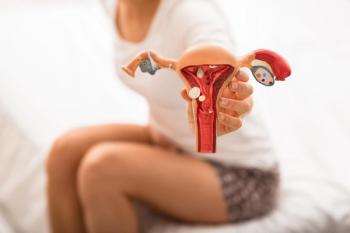
Enter the Laborist
Louis Weinstein, MD, Professor and Chair of Obstetrics at Thomas Jefferson University in Philadelphia, wants to transform obstetrics. Just as overworked and frustrated internists gave rise to the hospitalist in the 1990s, Dr. Weinstein sees overworked and frustrated obstetricians evolving into laborists.
Louis Weinstein, MD, Professor and Chair of Obstetrics at Thomas Jefferson University in Philadelphia, wants to transform obstetrics. Just as overworked and frustrated internists gave rise to the hospitalist in the 1990s, Dr. Weinstein sees overworked and frustrated obstetricians evolving into laborists.
"The Laborist is a movement that is starting to catch on," Dr. Weinstein told the ACM First Current Issues Update yesterday. "In 2003, I had the only article on the subject. Two years later, at least 10 hospitals and chains have introduced the position."
The concept of the Laborist is straightforward, Dr. Weinstein said. He or she is a hospital employee hired to staff the delivery room and nothing more. Like the hospitalist, who is employed to care for hospital inpatients, or the ER physician hired to provide emergency care, the Laborist is employed to care for women in labor.
"Hospitalists have the highest satisfaction and lowest burnout rate among all physicians," Dr. Weinstein explained. "They work very focused, very limited hours. It's shift work, the same predictable work schedule that has made the emergency department a popular choice among so many physicians. Obstetricians are poised for the same move."
The current practice model combines an office practice and a hospital practice for most obstetricians. That locks practitioners in an unending cycle of hospital rounds, deliveries, surgeries, more rounds, office visits, evening rounds, and late night telephone calls.
"Ob/gyns, it is time to take a look at ourselves and see if we can make it better," Dr. Weinstein said. "You are on the treadmill. You never get off unless you leave town."
Younger physicians are avoiding obstetrics, Dr. Weinstein added. The problem is not liability but time. They know traditional obstetricians work a treadmill. Today's physicians want to work hard and make a difference, he explained, but they also want to have a life.
The Laborist gives them both.
From the physician perspective, working for a hospital is very likely a financial bonus. Typical annual pay is around $175,000, but with no office expenses, that represents a boost for many obstetricians. Work as an employee also includes guaranteed vacations, CE time, and benefits.
From the hospital side, moving to Laborists is revenue-neutral. It also increases physician satisfaction and cost-effectiveness, boosts patient outcomes, controls liability costs, and increases patient satisfaction.
"You are gong to see this movement take off in the next 5 to 10 years," Dr. Weinstein predicted. "It will be a tremendous recruitment tool and a tremendous quality tool for our profession."
Newsletter
Get the latest clinical updates, case studies, and expert commentary in obstetric and gynecologic care. Sign up now to stay informed.










